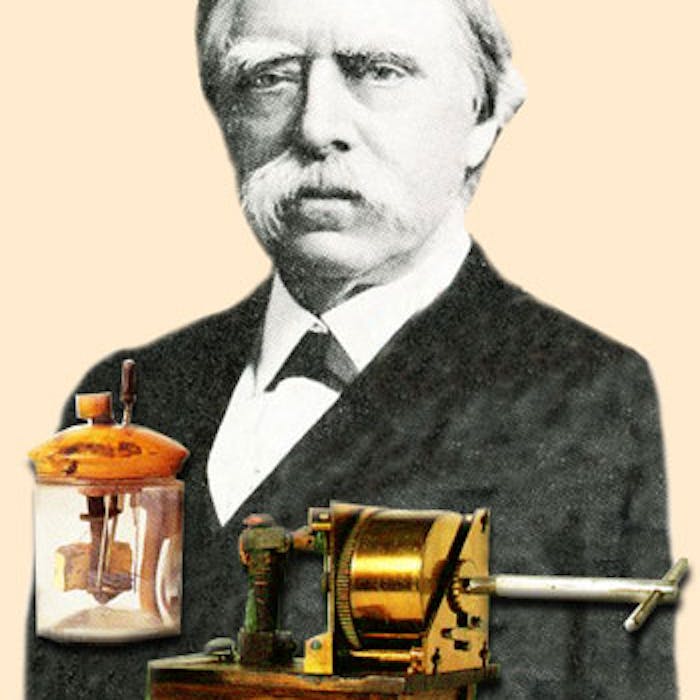
Sound thinking from David Hughes gave us the microphone
David Edward Hughes is generally acknowledged to have invented the first practical working carbon microphone in 1878, though other inventors were producing similar methods of amplification. A Welshman by birth, Hughes is believed to have been born in Corwen, north Wales in 1831.
His family emigrated to the United States in 1838 when he was seven.
At only six years old, he is known to have played the harp and English concertina to a very high standard. His music ability was such that he is reported to have attracted attention of Herr Hast, an eminent German pianist in America, who helped him become a leading professional in the field.
In 1850 he became professor of music at St. Joseph’s College, Bardstown, Kentucky. His inventive nature saw him take out five years later a U.S. patent for a type-printing telegraph instrument; which was an immediate success. In 1857, Hughes took it to Europe, where it was widely adopted and continued in use in some places until the 1930s.
Hughes’s microphone, invented in 1878 when he was in London, was the forerunner of the various carbon microphones that were used in most telephones produced in the 20th century.
From 1879 to 1886 Hughes performed a series of experiments in which his equipment transmitted wireless signals up to 500 yards. The observed effects were attributed to induction by other scientists. Hughes admitted that he did not really know how the transmissions were working. It was not realised until 1899, when German physicist Heinrich Hertz’s radio wave experiments revealed that Hughes had been the first to produce radio waves.
Hughes died in London in 1900.
Further reading
Links to external websites are not maintained by Bite Sized Britain. They are provided to give users access to additional information. Bite Sized Britain is not responsible for the content of these external websites.
